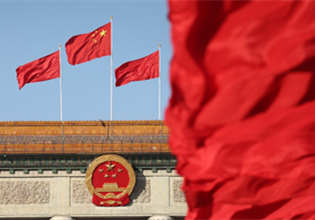Inner Mongolian economy maintains sound growth momentum
Inner Mongolia autonomous region has adhered to the new concept of development and has deepened the supply-side of its structural reform, according to local officials. The autonomous regions has placed an emphasis on environmentally friendly and green development.
In the first three quarters of 2019, Inner Mongolia actively dealt with the risks and challenges and maintained a steady economic growth momentum. The economic structure and people’s livelihoods during the period both improved.
From January to September, the gross domestic product in the region reached 1.3266 trillion yuan ($187.93 billion), an increase of 5.6 percent year-on-year.
In terms of three core industry groupings, the added value of the primary industry – extraction of raw materials - increased by 67.27 billion yuan in the period, up 1.6 percent year-on-year. The added value of the secondary industry – manufacturing - increased by 539.2 billion yuan, up by 6.8 percent. That of the tertiary industry - the services sector - increased by 720.14 billion yuan, up by 5 percent.
Officials reported that agricultural and animal husbandry production maintained stable development.
The added value of planting in the first three quarters of 2019, increased by 4.1 percent compared with the same period last year. The sown area of grain remained at over 6.67 million hectares. The cultivated area was improved for corns, soybeans, rice, grains, vegetables and fruits.
The production of pork, beef, mutton and poultry meat reached 1,708,000 tons, down by 3.9 percent year-on-year. However, output of beef, mutton and poultry saw stable growth, up 3.7 percent, 3.8 percent and 9.8 percent year-on-year, respectively.
Officials said the one decline was due to the output reduction of pork, which fell by 20.6 percent.
In the first three quarters, above-scale industrial added value increased by 7.7 percent year-on-year. In terms of the three different industry categories, the added value of the mining industry increased by 6.9 percent.
Meanwhile, the added value of the manufacturing industry increased by 10.1 percent and that of the electricity, heat, gas and water production increased by 5.7 percent on the previous year.
Officials report that the main industries maintained steady development. The added value of energy, metallurgical industry, chemicals industry and agricultural and animal products processing industry increased by 7.0 percent, 14.1 percent, 8.8 percent and 2.3 percent year-on-year, respectively.
The added value of the tertiary industry accounted for 54.3 percent of total GDP. In the first three quarters, Inner Mongolia autonomous region received about 140 million tourists and the tourism revenue reached 330.16 billion yuan. The renminbi deposits and loan balances of its financial institutions increased by 5.0 percent and 4.6 percent, respectively.
In January to August, among services industry companies above a designated size – posting annual revenue of 20 million yuan or more – business income from the software and information technology services industry increased by 19.6 percent, while the proportion of the revenue from business services industry accounted for 71.5 percent of the total.
Retail sales of consumer goods totaled 541.93 billion yuan, up 4.0 percent year-on-year in the first three quarters.
Retail sales of consumer goods in cities and towns were 474.09 billion yuan, while that in the rural areas reached 67.84 billion yuan.
Fixed asset investment in projects over 5 million yuan increased by 4.8 percent year-on-year, 4.4 percentage points higher than in the first half of the year.
Officials said that on the whole, in the first three quarters of 2019, the economic development in Inner Mongolia autonomous region maintained stable and high-quality development.
They added that in the future, Inner Mongolia will deepen its reform to delegate power, streamline its administration and optimize government services.
Furthermore, the region will strive to improve its business environment so as to promote steady and sound economic development.



 Print
Print Mail
Mail





